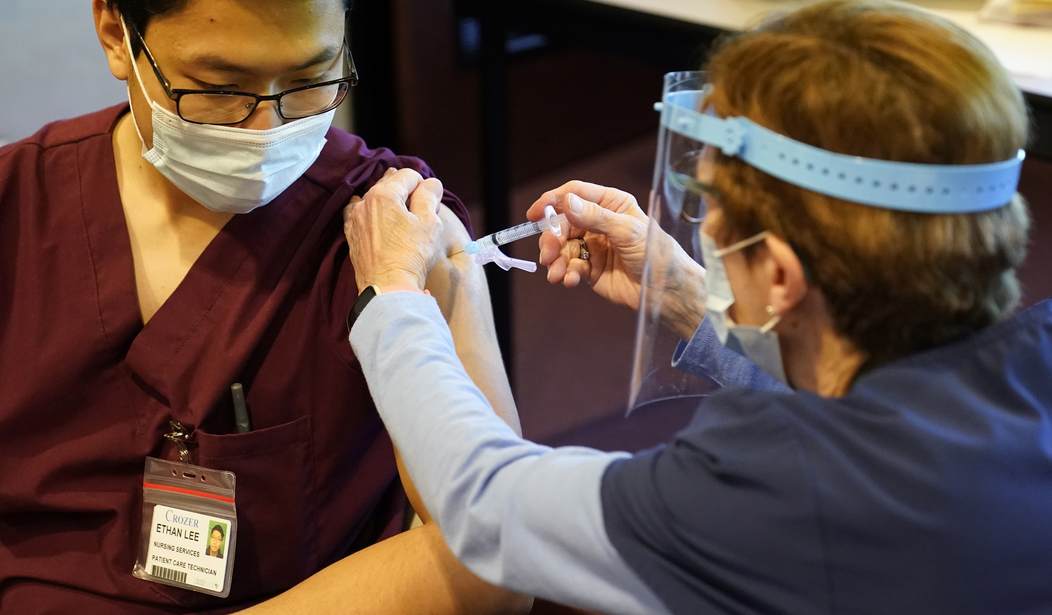With vaccinations rolling out nationwide, Oregon will not be the last to say individuals who are fully vaccinated have tested positive for COVID-19. First of all, studies report that the vaccines are approximately 95% effective. This finding will leave about 5% of those vaccinated vulnerable to infection with COVID-19. Second, the primary method of testing, a PCR test, is known to pick up viral debris at cycle thresholds (Ct) over 35 that is non-infectious. Dr. Fauci noted this in July, and a study by Jaafar et al. in September confirmed it.
The latter suggested that a Ct of 30 was appropriate for public health decision making. Only 20% of specimens above that threshold contain a replication-competent virus. Viruses must be able to replicate to cause illness or be transmitted. If a test found viral RNA in an asymptomatic patient’s airways that is not replication-competent, this would indicate the vaccine is working exactly as intended. The patient contracted the virus, and their immune system disposed of it before they became ill or transmitted it to others.
According to the report, all four breakthrough cases reported had either mild symptoms or no symptoms at all. So, in reality, these “breakthrough cases” are fantastic news. The vaccine reduced the infection’s virulence for those who could still be susceptible, and they suffered from mild symptoms only. In at least some, it stopped the disease altogether. They are sequencing the genome of the virus in the tests found. Hopefully, this study will yield more good news and find that the vaccine addresses the newer variants from the U.K. and other places.
It is not clear why health professionals tested the four individuals. The CDC now only recommends testing for symptomatic individuals and those with a confirmed exposure. The WHO went further, saying that in the absence of symptoms, a prevalence in the community, and other factors, the tests do not offer specificity for COVID-19. It also notes that weak positives, or those with a higher Ct, need to be reevaluated if they do not match the patient’s clinical presentation.
The CDC also took note that retesting is not recommended for at least three months. PCR tests can find viral debris in a recovered patient’s nasal passages for up to 90 days after recovering. The same would be true in any patient, including a vaccinated one, whose immune system mounted an effective response to fight the virus. This finding is especially likely if the test’s Ct remains between 37 and 40 as it did in August of 2020.
Israel, which has done a robust rollout to its smaller population, is reporting their results more positively:
Israel’s largest healthcare provider on Sunday reported a 94% drop in symptomatic COVID-19 infections among 600,000 people who received two doses of the Pfizer’s vaccine in the country’s biggest study to date.
Health maintenance organization (HMO) Clalit, which covers more than half of all Israelis, said the same group was also 92% less likely to develop severe illness from the virus.
From that analysis, it means that only approximately 4.8 of 1,000 vaccinated people over the age of 60 could suffer from more severe forms of COVID-19. Luckily, monoclonal antibodies and steroids like Dexamethasone are improving treatment in more severe cases, especially if given early. These results have been replicated as the rollout reaches younger age groups. Researchers are hoping the country’s detailed database will offer insight into herd immunity thresholds.
Efforts in the U.S. should not be aimed at reporting mild and asymptomatic breakthrough cases. It is severe illness from COVID-19 that is a concern, especially in the elderly. If researchers believe that an asymptomatic patient who is vaccinated has enough virus on board to transmit it, they need to explain why. That would be a remarkable claim that requires an extraordinary basis for making it.
What would be phenomenal is if researchers began studying whether vaccine recipients develop long-term cellular immunity in T-cells and B-cells, similar to patients who have recovered. Dr. Drew Pinsky has been monitoring his recovery this way and sharing it with his audience. At some point, there needs to be a determination of whether those who have already recovered require a vaccine. This need would not be the case with other vaccines, like chickenpox and pertussis. Pinsky also shared that the discussion of his immune response results has been censored online:
I gotta tell you, this is what exercises me, and my son as a law student got very worked up about this. We are board-certified in internal medicine. I have 35 years of practice in medicine. I’m having a conversation with a colleague and non-medical professionals are determining what is appropriate for a physician conversation in the public sphere which is anathema. It is bizarre. And there’s so many things wrong with that I can’t even begin to talk about it.
This assertion is correct. Dr. Drew is sharing peer-research information that the corporate media will not. He talks about humeral (antibody) and cellular immunity (T-cells and B-cells) and explains the difference in language laymen can understand. His guests include other healthcare professionals who help him navigate being a COVID-19 “long-hauler” suffering from neurological and respiratory symptoms after recovering. This first-person experience from a knowledgeable individual is invaluable to others suffering from symptoms they may not understand.
Medical censorship needs to stop. As much as some people would like you to believe the “science is settled” on specific topics, this is rarely the case. It is certainly not expected for a year-old virus, and a vaccine developed in under a year. People should view every piece of new information through that lens.










